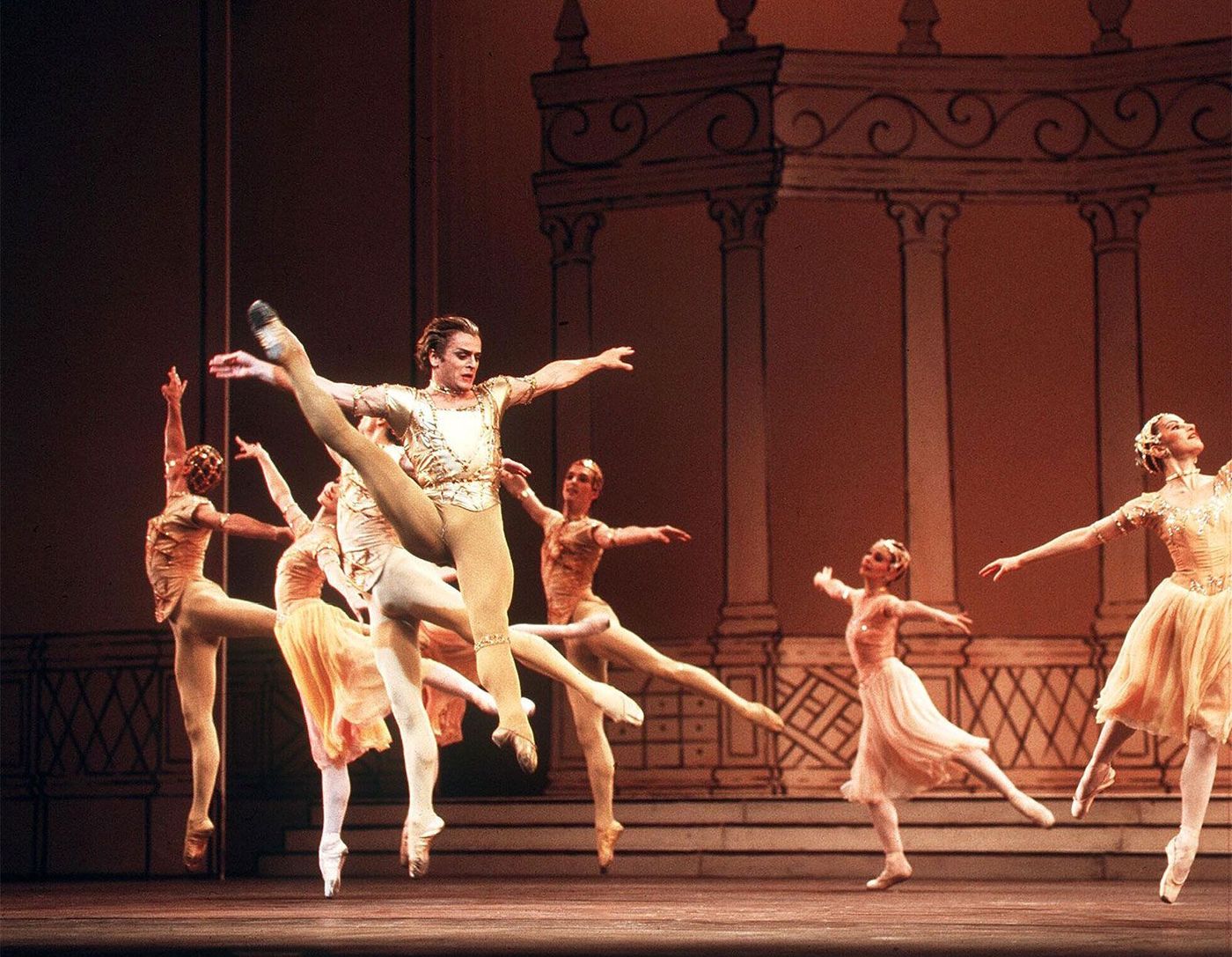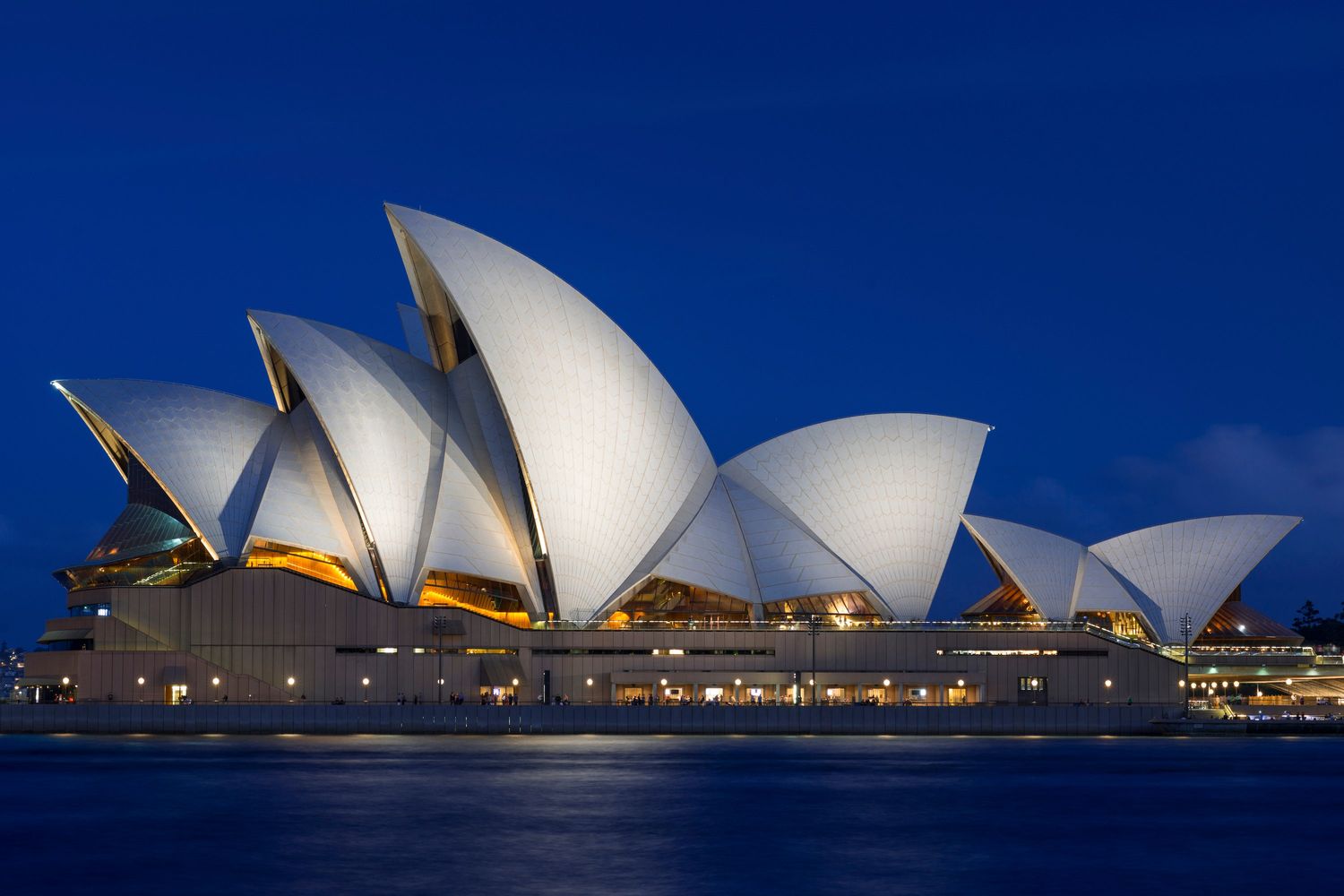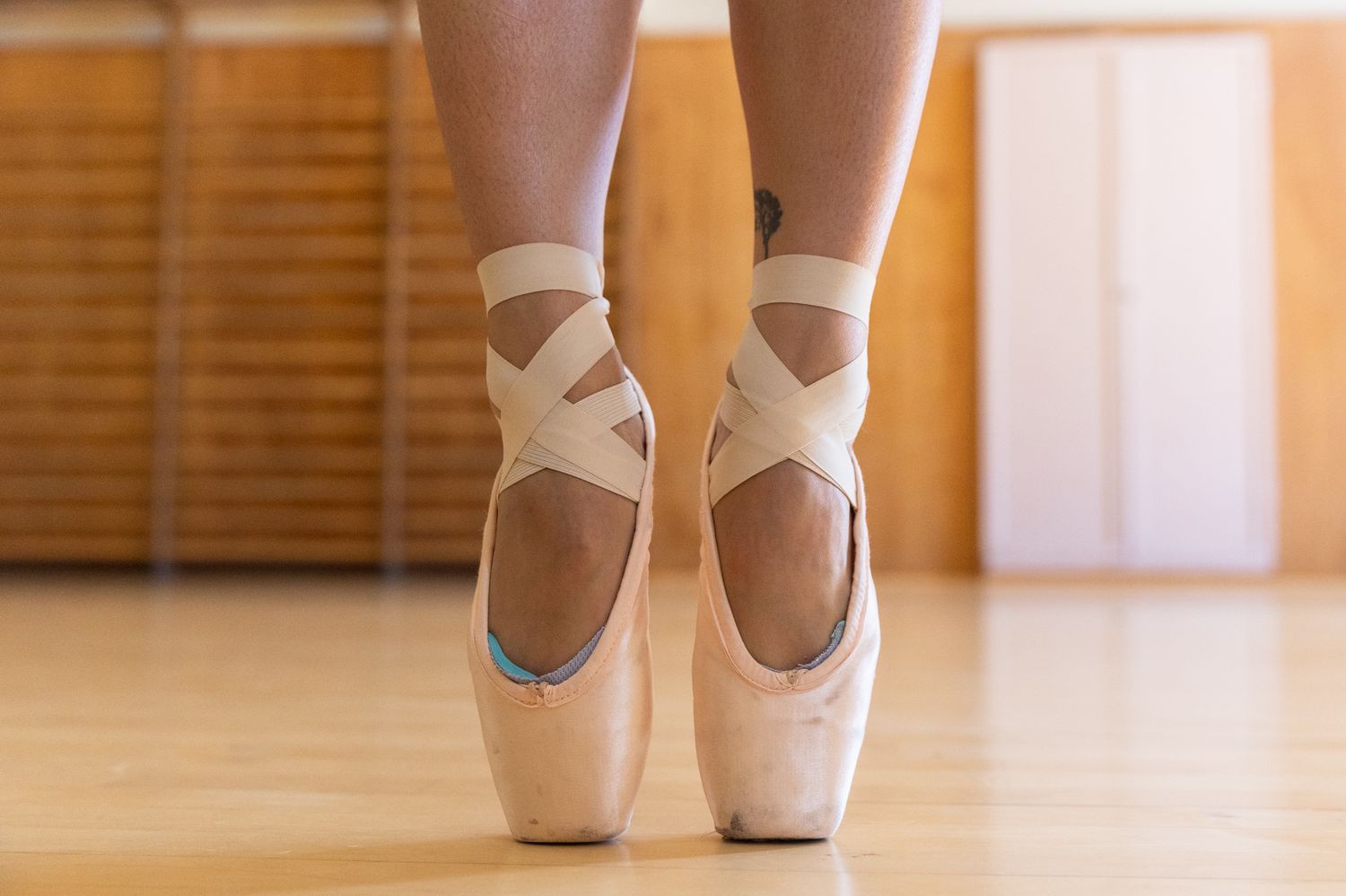Home>Events & Info>Ballet>When Was Classical Ballet Created


Ballet
When Was Classical Ballet Created
Modified: January 22, 2024
Discover the origins of ballet and its journey through history. Explore when classical ballet was created and how it has evolved into an enduring art form.
(Many of the links in this article redirect to a specific reviewed product. Your purchase of these products through affiliate links helps to generate commission for AudioLover.com, at no extra cost. Learn more)
Table of Contents
Introduction
Ballet, a beautiful and graceful dance form that has captivated audiences for centuries, has a rich and vibrant history. From its early beginnings as a courtly entertainment to its transformation into the classical ballet that we know today, this art form has evolved and mesmerized generations of dancers and spectators alike.
The origins of ballet can be traced back to the Italian Renaissance courts in the 15th and 16th centuries. It was in these lavish royal settings that ballet began to take shape as a form of entertainment for the elite. However, it wasn’t until the French court of Louis XIV in the 17th century that ballet became an established art form.
During this time, ballet underwent a significant transformation, transitioning from a courtly spectacle to a more structured and formalized dance style. It was during the reign of Louis XIV, known as the “Sun King,” that ballet masters and choreographers, such as Pierre Beauchamp, began to codify the movements and techniques of ballet, laying the foundation for what would eventually become classical ballet.
Classical ballet, as we know it today, emerged in the 18th century, with the development of a definitive ballet technique and the establishment of specific repertoire. This marked a shift towards a more standardized and systematic approach to ballet, with a focus on precision, technique, and storytelling.
Throughout its history, classical ballet has been shaped by influential figures who have made significant contributions to the art form. Choreographers like Marius Petipa and George Balanchine revolutionized ballet with their innovative choreography and groundbreaking creations. They brought new ideas, movements, and storytelling techniques to the stage, pushing the boundaries of what was considered traditional ballet.
Throughout the 19th and 20th centuries, classical ballet continued to evolve, with the development of new techniques and the incorporation of different dance styles and cultural influences. From Romantic ballets to neoclassical works, the repertoire of classical ballet expanded, encompassing a wide range of themes and emotions.
Today, the legacy of classical ballet can be seen in the countless ballet companies, schools, and productions around the world. It continues to inspire generations of dancers and audiences, captivating with its beauty, grace, and timeless storytelling.
In this article, we will delve into the origins of ballet, explore the emergence of classical ballet, examine the influential figures in its history, trace the evolution of ballet techniques, and discuss the development of its repertoire. Join us as we embark on a journey through the enchanting world of classical ballet.
Origins of Ballet
The origins of ballet can be traced back to the Italian Renaissance courts of the 15th and 16th centuries. It was during this time that courtly entertainment became increasingly popular, with performances consisting of music, dance, poetry, and elaborate costumes.
One of the earliest recorded instances of ballet-like dancing can be found in the wedding celebrations of Duke Galeazzo Maria Sforza of Milan in 1489. These performances featured intricate dances and movements that would later serve as a precursor to ballet.
However, it was in the French court of Louis XIV during the 17th century that ballet truly began to take shape as a distinct art form. Louis XIV, an avid dancer himself, founded the Académie Royale de Danse in 1661, which was the first formal dance academy in the world. It was here that techniques and rules for ballet were formalized.
At this time, ballet was primarily performed by men, with women playing secondary roles. Movements were often characterized by grand leaps, turns, and elaborate footwork. Costumes were lavish and ornate, reflecting the opulence and grandeur of the royal court.
As ballet gained popularity, it began to expand beyond the confines of the court and into public theaters, reaching a wider audience. This marked a significant shift in the accessibility of ballet, allowing people from different social backgrounds to experience the art form.
Notable court ballet masters and choreographers, such as Pierre Beauchamp, played a crucial role in codifying ballet movements and techniques during this period. Beauchamp is credited with developing the five positions of the feet, which form the foundation of ballet technique to this day.
The emergence of ballet as a fully-formed art form can also be attributed to the development of ballet de cour, which blended elements of courtly art and social dance. It combined graceful movements and refined gestures, creating a distinct style that would later evolve into classical ballet.
Overall, the origins of ballet can be seen in the lavish courtly spectacles of the Italian Renaissance and the formalization of techniques and movements in the French court of Louis XIV. These early influences laid the foundation for the development of classical ballet and set the stage for its further evolution in the centuries that followed.
Early Ballet Formations
During the 17th and 18th centuries, ballet underwent further developments and experienced various formations that shaped its trajectory. As ballet expanded beyond the confines of the royal court and into the public sphere, new dance styles, choreographic techniques, and narrative structures began to emerge.
One of the significant early forms of ballet during this period was the court ballet. These performances were grand productions that showcased the opulence and glamour of the royal court. Court ballets incorporated elements of mythology, history, and allegory into their storytelling, often featuring elaborate costumes, intricate stage designs, and a large ensemble cast.
Another influential ballet formation was the ballet d’action, which focused on storytelling through dance. The ballet d’action introduced a more dramatic and emotional approach to ballet, prioritizing the expression of character and narrative through movement. It emphasized the use of gestures, facial expressions, and body language to convey emotions and convey the story to the audience.
Within the ballet d’action, specific dance forms emerged. One prominent form was the pas de deux, a duet between a male and female dancer that showcased their technical skill and chemistry. The pas de deux became a staple in classical ballet, often serving as a highlight of a performance.
Furthermore, the concept of ballet divertissement gained popularity during this time. Divertissements were ballet interludes or diversions inserted into plays, operas, and other forms of entertainment. These smaller ballet pieces were often performed between acts or scenes and were characterized by their light and joyful nature.
As ballet evolved and reached a wider audience, it began to incorporate elements from different dance styles and cultures. For example, in the 18th century, ballet began to incorporate elements of folk dance, giving rise to a new form known as the ballet-pantomime. Ballet-pantomime featured storytelling through dance and mime, combining elements of classical ballet with the playful and expressive movements of folk dance.
Additionally, it was during this time that ballet began to diversify the cast of dancers. Female dancers, who were traditionally secondary figures, started to play more prominent roles and gained recognition for their technical skills and artistry. This shift resulted in the rise of ballerinas as leading figures in ballet.
Overall, the early formations of ballet played a crucial role in shaping the art form, establishing narrative techniques, introducing new dance styles, and expanding the scope of ballet performance. These developments set the stage for the emergence of classical ballet in the years to come and laid the foundation for the art form as we know it today.
Emergence of Classical Ballet
The emergence of classical ballet as a distinct and influential form of dance can be traced back to the 18th century. During this time, ballet underwent significant transformations in technique, storytelling, and artistic expression, setting the stage for the development of a new era in the history of ballet.
One of the key figures in the emergence of classical ballet was Jean-Georges Noverre, a French dancer and choreographer. Noverre believed in the importance of natural and expressive movements, advocating for a more realistic and emotionally driven approach to ballet. His ideas revolutionized ballet, moving away from the ornate and stylized court ballets of the past and towards a more nuanced and genuine form of artistic expression.
Another influential figure in the emergence of classical ballet was Marius Petipa, a French ballet master who worked in Russia. Petipa is often considered the father of classical ballet, as he choreographed many of the most iconic ballets that continue to be performed today, such as “Swan Lake,” “The Nutcracker,” and “Sleeping Beauty.” His choreographic style featured intricate footwork, precise formations, and a focus on storytelling through dance.
With the rise of the Romantic movement in the early 19th century, ballet took on a new dimension. Emotion, drama, and storytelling became paramount, and the ballerina emerged as the central figure in ballet performances. Romantic ballets, such as “Giselle” and “La Sylphide,” often featured supernatural themes and ethereal characters, emphasizing the grace and delicacy of the female dancers.
The technical developments in classical ballet also played a crucial role in its emergence. The codification of the five positions of the feet by Pierre Beauchamp in the 17th century laid the foundation for the ballet technique that is still practiced today. This technique involved precise footwork, strong turnout, and fluid movements executed with control and grace.
Furthermore, the emergence of pointe work, where female dancers balance and dance on the tips of their toes, added a new level of virtuosity and elegance to ballet. Pointe work became an iconic element of classical ballet and showcased the strength and grace of the dancers.
Classical ballet also saw advancements in costume design and stagecraft. Elaborate tutus, flowing gowns, and intricate headdresses became synonymous with ballet, enhancing the visual spectacle and adding to the overall enchantment of the performances.
With the influence and contributions of visionary choreographers like Noverre and Petipa, along with technical innovations and a focus on expressive storytelling, classical ballet emerged as a distinct and influential art form. It set the stage for the development of the vast and diverse repertoire of classical ballet that continues to captivate audiences around the world.
Influential Figures in Classical Ballet
Classical ballet has been shaped and propelled forward by numerous influential figures who have left a lasting impact on the art form. These individuals, with their artistic vision, technical mastery, and choreographic innovations, have pushed the boundaries of ballet and elevated it to new heights.
One of the most influential figures in the history of classical ballet is Marius Petipa. Serving as the ballet master of the Imperial Ballet in St. Petersburg, Russia, during the late 19th century, Petipa is hailed as the father of classical ballet. He choreographed timeless masterpieces such as “Swan Lake,” “The Sleeping Beauty,” and “The Nutcracker,” which remain cornerstones of the classical ballet repertoire.
Another towering figure in ballet is George Balanchine, who revolutionized the art form with his distinctive neoclassical style. Balanchine, an influential choreographer of the 20th century, co-founded the New York City Ballet and created iconic works such as “The Four Temperaments” and “Symphony in C.” His focus on musicality, speed, and athleticism brought a fresh and modern perspective to ballet.
Vaslav Nijinsky, a Russian ballet dancer, also left an indelible mark on classical ballet. Known for his technical prowess and dynamic performances, Nijinsky stunned audiences with his gravity-defying leaps and expressive interpretations. He became a superstar of the ballet world and played significant roles in ballets such as “The Rite of Spring” and “Les Sylphides.”
Anna Pavlova, a Russian ballerina, is considered one of the most iconic and influential figures in ballet history. Known for her ethereal beauty and exquisite grace, Pavlova captivated audiences around the world with her interpretations of classical ballet roles. She gained international acclaim and became a symbol of ballet’s allure and artistry.
In addition to these individual figures, ballet companies have played a crucial role in shaping the art form. The Bolshoi Ballet in Moscow and the Paris Opera Ballet are renowned for their rich heritage, talented dancers, and exquisite performances. These companies have nurtured and showcased some of the greatest ballet talent throughout history, contributing to the growth and development of classical ballet.
Furthermore, the contributions of choreographers like Frederick Ashton, Jerome Robbins, and Antony Tudor have expanded the repertoire of classical ballet, infusing it with innovative movements and diverse themes. Their creations have pushed the boundaries of storytelling and challenged the conventions of ballet, resulting in captivating and thought-provoking works.
These influential figures, through their artistic vision, technical brilliance, and unwavering dedication to the art form, have shaped the history of classical ballet. Their contributions have paved the way for future generations of dancers and choreographers, ensuring that the legacy of classical ballet remains vibrant and relevant today.
Evolution of Classical Ballet Techniques
The evolution of classical ballet techniques has been a dynamic and ongoing process throughout its history. From the establishment of foundational techniques in the 17th century to the exploration of new movement possibilities in the present day, ballet has constantly evolved and adapted to reflect the changing aesthetics and artistic goals of each era.
One of the key developments in classical ballet techniques was the codification of the five positions of the feet by Pierre Beauchamp in the 17th century. These positions serve as the basic framework for ballet movement, providing a foundation for balance, alignment, and turnout. The positions of the arms also developed alongside the positions of the feet, adding elegance and symmetry to ballet movements.
During the Romantic era in the 19th century, ballet technique underwent significant changes. The rise of pointe work allowed female dancers to showcase a delicate and ethereal quality, defying gravity as they danced on the tips of their toes. Pointe work required strength, balance, and precision, adding a new level of virtuosity to ballet performances.
Furthermore, the development of the ballerina as the central figure in ballet led to the refinement of techniques specific to female dancers. The use of delicate and graceful movements, intricate footwork, and expressive upper body gestures became central to the artistry of ballerinas, highlighting their technical skill and artistry.
The 20th century brought further innovations in ballet technique, particularly through the works of influential choreographers such as George Balanchine. Balanchine emphasized speed, musicality, and athleticism in his choreography, leading to the development of what is known as neoclassical ballet. Neoclassical ballet discarded some of the traditional rules and movements of classical ballet, embracing a more contemporary approach with off-center balances, unconventional shapes, and non-narrative structures.
In recent years, the evolution of classical ballet techniques has continued to expand and push boundaries. Contemporary ballet has emerged as a fusion of classical ballet with elements of modern and contemporary dance. It challenges traditional notions of technique by incorporating new movement vocabularies, partnering dynamics, and innovative choreographic approaches.
Contemporary ballet also explores a greater range of body types and diversity in movement styles, celebrating individuality and breaking away from the strict adherence to the traditional ideals of ballet aesthetics.
Overall, the evolution of classical ballet techniques reflects a continuous exploration of new movement possibilities, artistic expressions, and shifting ideals of beauty. From the establishment of foundational positions and movements to the emergence of neoclassical and contemporary techniques, ballet has proved to be a living art form that responds to the changing times while preserving its rich traditions.
Development of Ballet Repertoire
The development of ballet repertoire has been a dynamic process that spans centuries and encompasses a diverse range of themes, styles, and choreographic works. The repertoire of classical ballet has evolved and expanded over time, reflecting the artistic vision and creative innovations of choreographers, as well as the changing tastes and interests of audiences.
In its early beginnings, ballet repertoire consisted primarily of courtly entertainments and interludes inserted into theatrical productions. These divertissements were characterized by their light and joyful nature, often featuring solo and ensemble dances that showcased the technical abilities of the dancers.
During the Romantic era of the 19th century, ballet repertoire took on a more narrative-driven approach. Romantic ballets, such as “Giselle” and “La Sylphide,” brought mythical and supernatural themes to the forefront. These ballets emphasized the emotional and dramatic aspects of storytelling, allowing dancers to convey complex characters and evoke powerful emotions through movement.
The late 19th and early 20th centuries saw a surge of classical ballet repertoire thanks to choreographers like Marius Petipa. Petipa, the ballet master of the Imperial Ballet in St. Petersburg, choreographed iconic works such as “Swan Lake,” “The Sleeping Beauty,” and “The Nutcracker.” These ballets incorporated intricate footwork, elaborate group formations, and grand pas de deux, becoming cornerstones of the classical ballet repertoire.
As the 20th century progressed, choreographers like George Balanchine and Frederick Ashton expanded the ballet repertoire with their unique artistic visions. Balanchine’s neoclassical ballets, such as “Agon” and “Symphony in C,” explored new movement dynamics and pushed the boundaries of traditional ballet techniques. Ashton, on the other hand, infused narrative ballets with sensitivity, humor, and a distinctive British style, as seen in works like “Cinderella” and “The Dream.”
Contemporary ballet has further expanded the repertoire, incorporating elements from different dance styles and exploring a wide range of themes and concepts. Choreographers like William Forsythe, Christopher Wheeldon, and Wayne McGregor have contributed innovative and thought-provoking works that blend classical ballet technique with contemporary movement vocabularies.
In recent years, there has been a growing emphasis on diversity and inclusivity within the ballet repertoire. Ballet companies have sought to showcase a wider range of stories, perspectives, and cultural traditions through new commissions and revived classics. This endeavor aims to reflect the evolving world we live in and create a more inclusive and representative art form.
Overall, the development of ballet repertoire is a testament to the ever-evolving nature of the art form. From divertissements to narrative-driven ballets, classical masterpieces to contemporary explorations, the repertoire continues to evolve, captivating audiences with its diversity, artistry, and timeless beauty.
Impact and Legacy of Classical Ballet
Classical ballet has had a profound impact on the world of dance and the arts at large. Its legacy reaches far beyond the stage, leaving an indelible mark on culture, society, and the development of subsequent dance forms. The impact and legacy of classical ballet can be seen in various aspects of art, education, and the preservation of traditions.
One of the significant impacts of classical ballet is the cultivation of discipline, resilience, and artistic expression in dancers. The rigorous training required for ballet instills a strong work ethic, physical discipline, and perseverance, which can be applied to various aspects of life. The focus on technique, musicality, and storytelling also nurtures creativity and emotional depth in dancers, allowing them to become true artists.
Classical ballet has also played a crucial role in shaping the education of future dancers. Ballet schools and training programs around the world have adopted the techniques and methodologies of classical ballet as the foundation for training aspiring dancers. The principles of alignment, turnout, and grace taught in ballet serve as the building blocks for dancers in various styles and disciplines, providing a solid technical foundation.
The influence of classical ballet extends beyond the dance community. Ballet has inspired and influenced numerous visual artists, composers, and filmmakers. Its graceful movements, exquisite costumes, and rich storytelling have adorned art galleries, concert halls, and movie screens. The combination of music, dance, and visual aesthetics in ballet productions has provided endless inspiration and opportunities for collaboration.
Furthermore, classical ballet has contributed to the preservation of cultural traditions and heritage. Many iconic ballets, such as “Swan Lake” and “The Nutcracker,” have become an integral part of holiday celebrations and cultural events around the world. These ballets help to keep alive stories, music, and choreography that have been passed down through generations, creating a connection to history and cultural identity.
The legacy of classical ballet can also be seen in the continued popularity and influence of the art form. Ballet companies, both large and small, continue to captivate audiences worldwide with their performances. Ballet has not only survived but thrived in an ever-changing entertainment landscape, maintaining its place as one of the most respected and celebrated art forms.
Moreover, classical ballet has paved the way for the development of new dance styles and techniques. Contemporary ballet, neoclassical ballet, and fusion forms that merge ballet with other genres have emerged, offering fresh perspectives and expanding the possibilities of movement and expression.
In summary, the impact and legacy of classical ballet are far-reaching, influencing dancers, artists, educators, and audiences worldwide. Its enduring beauty, technical precision, and timeless storytelling continue to inspire and captivate people of all ages, ensuring that the legacy of classical ballet will continue to be cherished and celebrated for generations to come.
Conclusion
Classical ballet, with its rich history, technical brilliance, and captivating performances, has stood the test of time as one of the most revered art forms. From its origins in courtly entertainment to its emergence as a structured and influential dance style, ballet has evolved and adapted, leaving an indelible mark on the world of dance and the arts.
Throughout its journey, ballet has been shaped by influential figures who have pushed the boundaries of creativity and technique. Choreographers like Marius Petipa, George Balanchine, and Jean-Georges Noverre have redefined ballet, creating iconic works that continue to be celebrated and performed today.
The development of classical ballet techniques, from the codification of positions to the exploration of pointe work, has shaped the physicality and aesthetics of the art form. Ballet techniques continue to evolve, embracing innovation and incorporating diverse movement styles.
The expansion of ballet repertoire, from divertissements to narrative-driven ballets, from classical masterpieces to contemporary explorations, has captivated audiences and pushed the boundaries of storytelling within dance. The enduring popularity of ballet demonstrates its profound impact on culture and its ability to transport audiences to a world of beauty and emotion.
The legacy of classical ballet extends beyond the stage. Its influence can be found in ballet training and education, inspiring discipline, creativity, and resilience in dancers. It has also influenced other art forms, such as visual arts, music, and film, and played a role in preserving cultural traditions.
In conclusion, classical ballet stands as a testament to the power of discipline, artistry, and storytelling. Its enduring impact and legacy continue to inspire and captivate, ensuring that this exquisite art form will be cherished and celebrated for generations to come.











